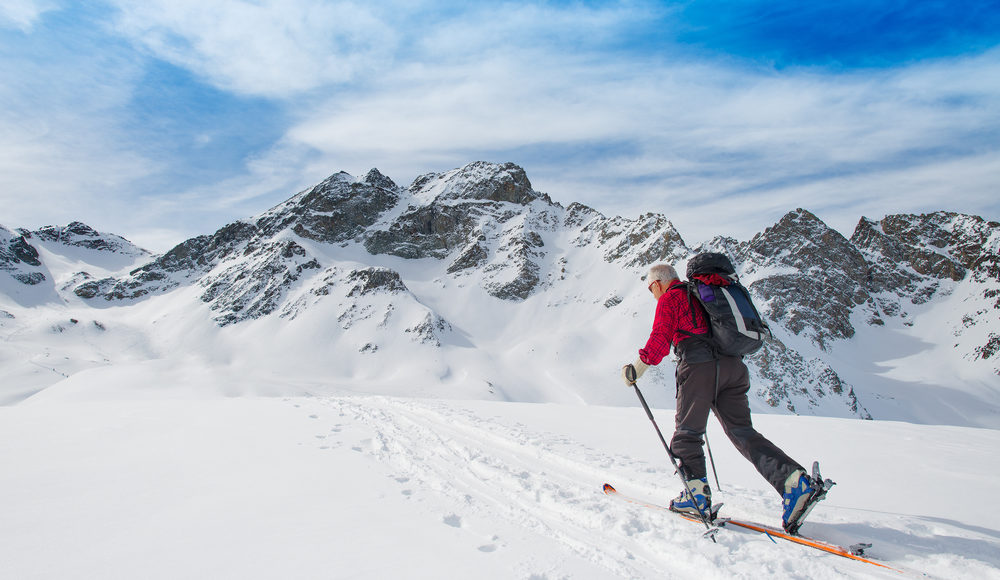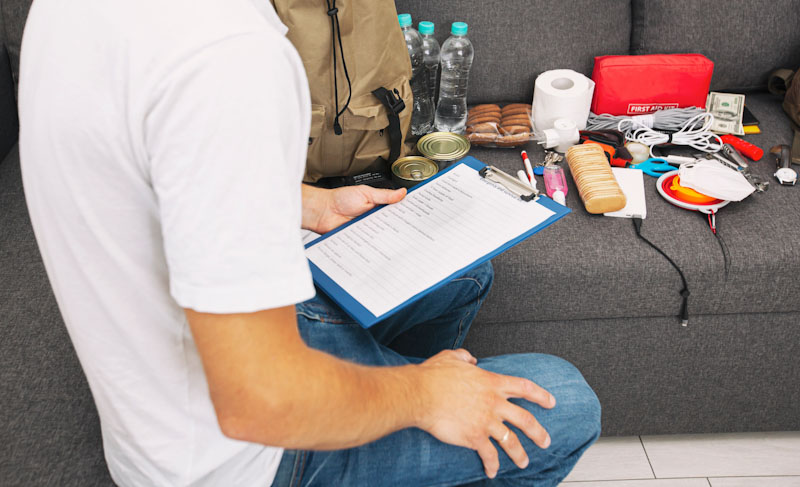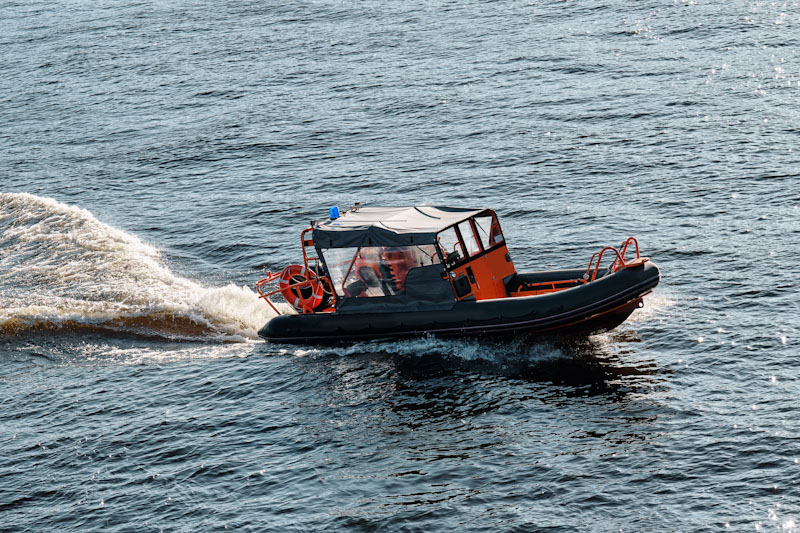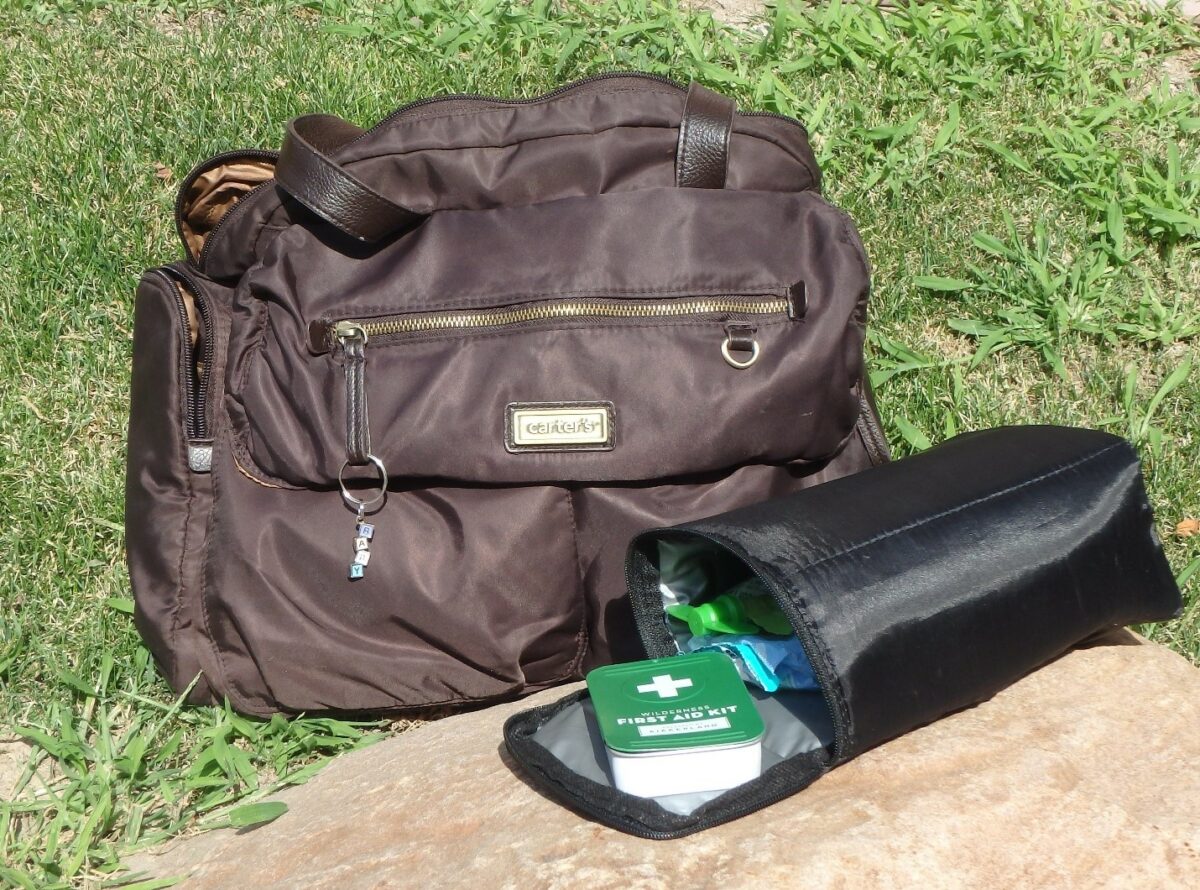For many folks out there, bugging-out means leaving the comfort of their urban homes and heading into the surrounding woods. These journeys can often become dangerous since they will take them over hills and mountainous terrain.
Elevated rocks and vast mountainous landscapes can bring additional challenges to an already dangerous trip. A twisted ankle can suddenly stop your journey, while falling rocks or a rapid drop from great heights may lead to your demise.
Traversing mountainous terrain is a subject often overlooked by preppers, and they fail to include this task in their bugging-out plan even though they will have to deal with elevated areas during their journey to safety. With some basic knowledge, some key pieces of equipment, and a great deal of common sense as you travel, even the mountainous landscape can become a safe refuge.
The perils of uneven terrain
Uneven terrain poses a problem even if you traverse small hills, and it can cause a variety of injuries, especially if you are carrying a heavy backpack. When a slanted surface is covered with loose rocks and gravel, your chances of falling or misstepping increase considerably.
In general, going uphill is less hazardous than going downhill. To reduce fatigue and tension on your ligaments, joints, and muscles, it’s recommended to ascend in a zigzag pattern to decrease the upward angle. Sure, it will increase the duration of your journey, but it will considerably decrease the wear and stress on your body.
When you descend, you need to pay attention to your center of gravity, keeping it low and over your legs. Taking short steps will keep your balance and center of gravity constant. People sometimes take long steps to descend faster, but this is dangerous because your balance can shift, and you lose control, eventually tumbling downhill.
Do not let your body lean forward, nor let it lean back when you descend. Keep your legs slightly bent to absorb the stress of each step. Do this with any type of terrain, regardless if it’s covered with rocks, dirt, sand, or snow.
When ascending on descending on uneven terrain, make sure you are well-rested and have the energy to reach the top or the bottom before nightfall. Use caution and make the most of your time and daylight since traveling at night is extremely dangerous.
You should go with the path of less resistance and follow the trails, even those that are slightly visible since these will help you move easier and safer. Stay on the trail since time is of the essence, and you don’t want to get lost in an unknown environment. It’s also recommended to use trekking poles or walking sticks to help with your balance and stability.
Falling rocks
Gravity pulls your body downward as you travel upward, and the laws of physics apply not only to your body but to all the things around you. Inanimate objects like rocks and small boulders scattered across the elevated landscape can become a real problem.
These dangerous obstacles can be loosened by various factors long before you find yourself in the area. Erosion, intense rainfall, high winds, and many other factors can cause rockslides. These rockslides can be small or big, and they are all dangerous if you’re in the direct path. Hikers are often injured and even killed by falling rocks.
To decrease your chances of being pounded by solid rock, you need to know the warning signs and follow some important steps. It’s always recommended to wear a helmet when hiking or climbing up a steep incline, and I can really vouch for this. Such an item should be in your bug-out bag if you live near a mountainous landscape and if your bug-out route follows a path with mountainous terrain. Falling rocks lead to head trauma if you’re not wearing a helmet, and this is one of the most debilitating injuries one can experience in the wilderness.
Observing the surrounding environment for loose soil, especially if you find yourself in an area drenched by an intense rainstorm, will help you avoid ascending on unstable ground. You could loosen the rocks surrounding you, and chances are you will bring them down upon you. It’s recommended to plan an alternate path, one with solid ground or one where there are fewer locks above your climbing direction.
Another sign you should also pay attention to is human activity since drilling or lumberjacking and even groups of people following the same route as you can also cause rockslides. The vibration of such activities occurring at ground level and even carelessness can put you in danger, so it’s better to find a more isolated route. Keep in mind that even if these activities are not occurring near you, they can still create shock waves that can reach your location, and you will be in danger.
The unseen dangers
As an experienced camper and hiker with decades of adventures behind me, in time, I’ve learned that you should use all your senses when moving through treacherous terrain. Sometimes you will have to deal with poor visibility, or if luck isn’t on your side at all, there could be no visibility at all. Going forward in such conditions will get you in trouble, so it’s recommended to make camp in a safe space and continue your journey when it’s possible.
The weather can be a formidable adversary during your uphill or downhill journey, and rain, snow, and mist will cause all types of injuries or create various setbacks that oftentimes will put you in danger.
I find rain constantly hitting your face and water dripping in your eyes one of the main factors that can cause a misstep leading to a nasty fall. A pair of goggles will come in handy since they will keep water, snow, and small dust particles out of your eyes if you travel in adverse weather.
The changing weather will not only slow you down but will oftentimes force you to make a detour or go on a steeper trail, and you may even get lost. Add to this traveling in darkness or near darkness, and you have the perfect recipe for disaster. As said previously, your should be able to reach your destination by nightfall or find a safe spot for camping if that’s not possible. The lack of light will affect your depth of perception, and this often leads to missteps and broken bones.
If you are forced to move at night, you should do so slowly, calculating your every step, and you should have a light source available. Avoid using the flashlight from your smartphone and invest in a powerful flashlight that can properly illuminate the path in front of you.
We all have our limits
While reaching your destination is critical during a bugging-out scenario, it’s equally important to get there in one piece. Most people tend to push themselves in order to achieve their goals, but pushing your body further physically should be avoided in the wilderness since it will only create preventable problems.
Fatigue is a killer in the wild, and the level of exhaustion ranges from being worn out to more complex problems like dizziness, muscle pain, general weakness, and an impaired mind that can no longer make the right decisions. People will often ignore the warning signs, and they will keep pushing forward since “we’re almost there”.
Leg cramps often lead to extremely difficult climbing efforts, and they stop people in their tracks, making them camp in locations that can be dangerous. Weak upper body strength due to constant effort will affect grip strength and your body strength as a whole, which can lead to tragedies.
When you get exhausted, even the path that was easy at the begging may prove to be an effort your body can no longer handle. After hours of hiking and traversing mountainous terrain, your body may give up, so it’s important to stop and let your body rest.
There are some things I’ve learned after years of hiking, and they have helped me move farther and faster. Here are my recommendations in case your bug-out route takes you upward in a mountainous landscape.
Carry plenty of water to always stay hydrated, and bring some snacks to provide fuel and energy to your body. I’ve talked about dehydration before and how it can become a problem in the wilderness, so keep in mind that losing just 2% of body fluids will decrease your physical capacity by 20%. Drink up regularly if you want to prevent a loss in performance.
Keeping your body nourished and providing enough calories is equally important since it will ensure it gets enough energy to keep a safe and steady pace. Even so, pay attention to what you eat because this is a matter you can’t ignore.
The night before your journey upward, you should eat high-carbs and starchy foods since your body will process them overnight. For lunch, keep it light, and perhaps you should try some energy bars since these will provide enough energy without making you bloated. Keep it low on the high-sugar foods since these will only provide initial bursts of energy, but overall, they will drop your energy levels after the first push.
When resting, find a comfortable place to do so because it will help you recuperate faster. Moving too fast leads to more rest stops, and you will push yourself afterward to make up for the lost time. Fatigue usually affects those that keep a fast pace, especially if they are not physically fit and if they have little hiking experience. Keep a constant moving speed, and you will reach your destination safer and with less energy spent.
And lastly, never assume you can make the trip if you don’t build up endurance long before you are forced to make the trip. Do a lot of practice runs in your environment and observe how you can handle the weight, rough terrain, how your body wears and tears, and what you need to improve about yourself. Building body strength takes time, and with each training session, you should push yourself further without putting yourself at risk.
Concluding
If you need to travel in mountainous terrain to get to a specific location, the best thing you can do is have a plan and be prepared for the journey. Carry and wear the appropriate gear, stay hydrated and energized with food, and be aware of your physical and mental limitations. Mother Nature doesn’t give second chances and will bring all sorts of obstacles in your path, so be smart enough to get past those obstacles on your way to safety.










